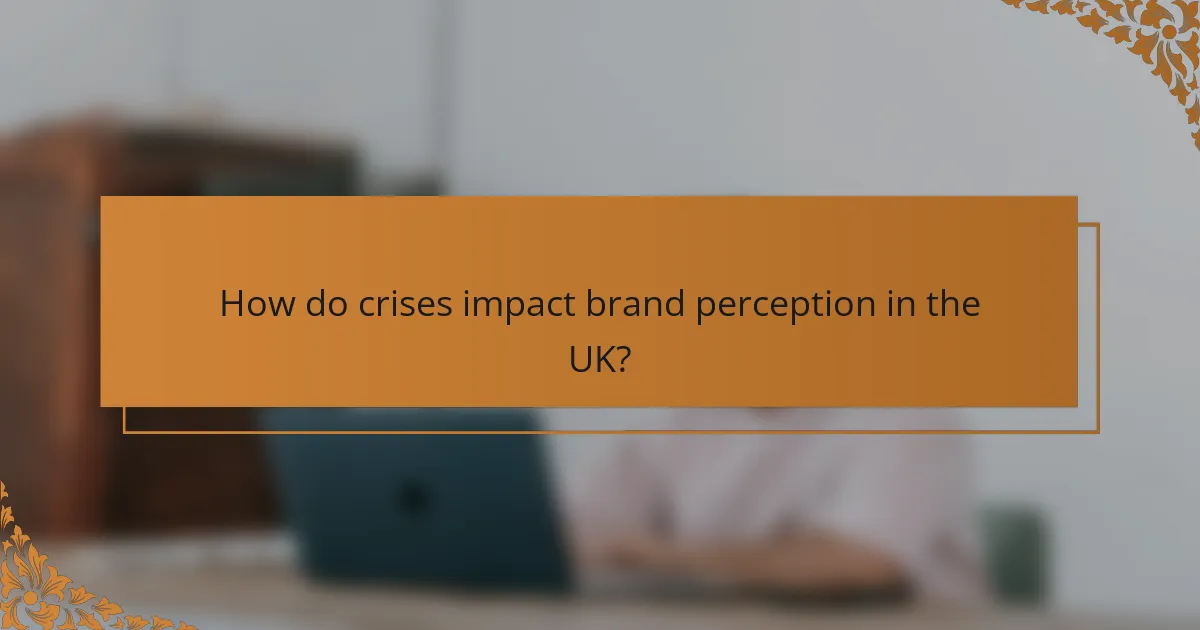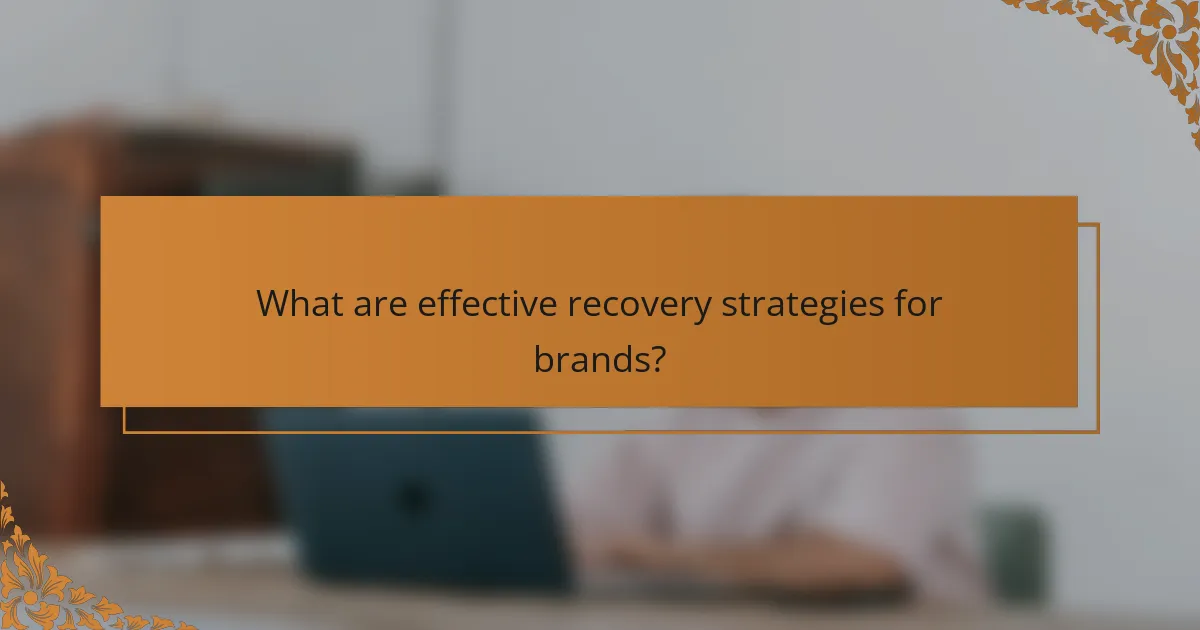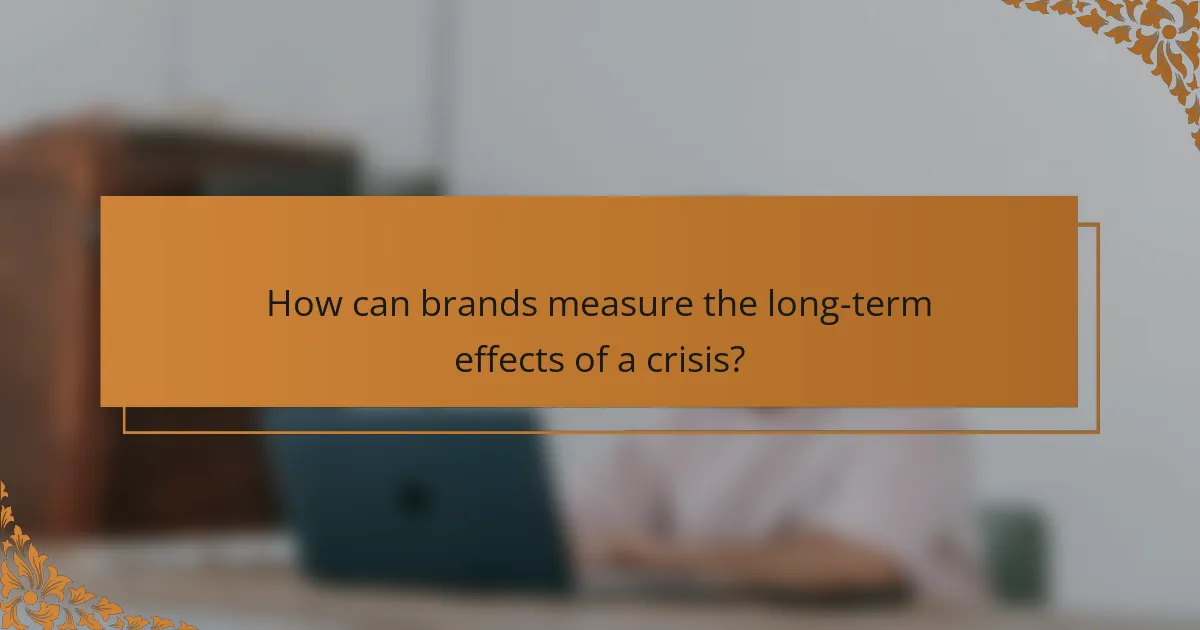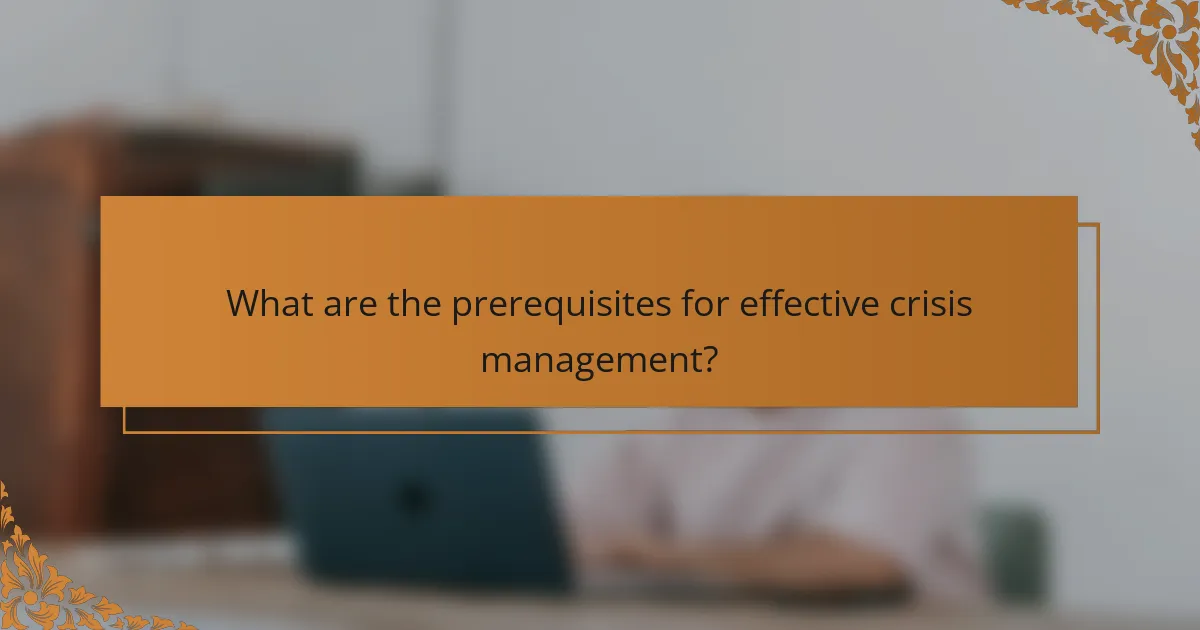Crisis situations can profoundly impact brand perception, particularly in the UK, where negative consumer reactions can lead to diminished trust and loyalty. To navigate these challenges, brands must implement effective recovery strategies that prioritize transparent communication and customer engagement, ultimately aiming to restore their reputation. Social media plays a crucial role in this process, allowing brands to manage their image and connect with consumers in real-time during difficult periods.

How do crises impact brand perception in the UK?
Crisis situations can significantly alter brand perception in the UK, often leading to negative consumer reactions and long-lasting effects on trust and loyalty. Brands that fail to manage crises effectively may find themselves struggling to regain their previous standing in the eyes of consumers.
Negative consumer sentiment
During a crisis, consumer sentiment can shift rapidly, often resulting in negative feelings towards a brand. This can stem from perceived negligence, poor communication, or inadequate responses to the situation. For instance, if a company is involved in a scandal, customers may express their discontent through social media, leading to widespread criticism.
To mitigate negative sentiment, brands should prioritize transparent communication and demonstrate accountability. Engaging with consumers directly and addressing their concerns can help rebuild trust and improve overall sentiment.
Long-term trust issues
Trust is a crucial component of brand perception, and crises can create long-term trust issues that are difficult to overcome. Once trust is broken, it may take considerable time and effort to restore it. Brands may need to implement changes in their operations or policies to reassure consumers that they are committed to improvement.
Regularly sharing updates on progress and maintaining open lines of communication can aid in rebuilding trust. Brands should also consider third-party endorsements or certifications to validate their commitment to quality and safety.
Brand loyalty erosion
Crisis situations can lead to a decline in brand loyalty as consumers may turn to competitors who they perceive as more reliable. This erosion of loyalty can be particularly pronounced in markets where alternatives are readily available. Brands must recognize that loyal customers may become disenchanted if they feel their values are not aligned with the brand’s actions during a crisis.
To combat loyalty erosion, brands should focus on re-engaging their customer base through loyalty programs, personalized communication, and demonstrating a commitment to social responsibility. Offering incentives or exclusive benefits can also help regain the trust of former loyal customers.

What are effective recovery strategies for brands?
Effective recovery strategies for brands focus on restoring reputation and customer loyalty after a crisis. Key approaches include transparent communication, rebuilding trust initiatives, and customer engagement programs.
Transparent communication
Transparent communication involves openly sharing information about the crisis and the steps being taken to address it. Brands should provide regular updates through various channels, ensuring that messaging is consistent and clear.
Consider using social media, email newsletters, and press releases to reach different audiences. This approach fosters a sense of honesty and accountability, which can mitigate negative perceptions.
Rebuilding trust initiatives
Rebuilding trust initiatives are essential for regaining customer confidence. Brands should implement programs that demonstrate commitment to quality and customer satisfaction, such as enhanced service guarantees or product recalls if necessary.
Offering compensation, like discounts or loyalty rewards, can also help restore faith in the brand. It’s crucial to follow through on promises and show tangible improvements over time.
Customer engagement programs
Customer engagement programs are designed to reconnect with consumers and foster loyalty. These can include surveys to gather feedback, interactive social media campaigns, or community events that involve customers directly.
Engaging customers in meaningful ways can help brands understand their needs better and tailor offerings accordingly. Regular interaction can strengthen relationships and reinforce a positive brand image in the long run.

What role does social media play in crisis recovery?
Social media serves as a vital tool in crisis recovery by facilitating real-time communication, enabling brands to manage their reputation, and fostering community engagement. It allows companies to respond quickly to customer concerns and shape public perception during challenging times.
Real-time feedback channels
Social media platforms provide immediate feedback channels where customers can voice their opinions and concerns. Brands can monitor these platforms to gauge public sentiment and identify emerging issues quickly. For instance, a company facing a product recall can use social media to understand customer reactions and adjust their messaging accordingly.
Utilizing social listening tools can enhance this process, allowing brands to track mentions and sentiment analysis across various platforms. This proactive approach helps in addressing problems before they escalate.
Brand reputation management
Effective reputation management on social media involves timely and transparent communication. Brands should acknowledge issues openly and provide updates on their resolution efforts. This transparency can build trust and mitigate negative perceptions.
For example, a brand that responds promptly to a crisis with clear information and actionable steps can significantly improve its reputation. Regularly engaging with customers and addressing their concerns can also foster loyalty and enhance brand image.
Community building
Social media is instrumental in building a supportive community around a brand, especially during crises. By creating spaces for dialogue, brands can encourage customers to share their experiences and support one another. This sense of community can be a powerful asset in recovery efforts.
Brands should consider hosting live Q&A sessions or creating dedicated groups to facilitate discussions. These initiatives not only strengthen relationships with existing customers but also attract new audiences who value transparency and engagement during tough times.

How can brands measure the long-term effects of a crisis?
Brands can measure the long-term effects of a crisis through various methods that assess consumer sentiment, brand performance, and market position. Understanding these effects is crucial for developing effective recovery strategies and restoring brand perception.
Consumer surveys
Consumer surveys are a direct way to gauge public sentiment post-crisis. Brands can use structured questionnaires to assess changes in consumer attitudes, loyalty, and trust. Regularly conducting these surveys can help track shifts over time and identify specific areas needing improvement.
When designing surveys, consider including questions about brand perception, purchase intent, and overall satisfaction. Open-ended questions can also provide qualitative insights that numbers alone may not capture.
Brand health metrics
Brand health metrics encompass various indicators such as brand awareness, perception, and loyalty. Key metrics include Net Promoter Score (NPS), brand equity, and customer satisfaction scores. Monitoring these metrics over time can reveal how a crisis has impacted overall brand health.
It’s essential to benchmark these metrics against industry standards to understand relative performance. Regular assessments can help identify trends and inform strategic decisions to enhance brand recovery.
Market share analysis
Market share analysis provides insight into a brand’s competitive position following a crisis. By examining changes in market share, brands can determine if they are gaining or losing ground relative to competitors. This analysis often involves tracking sales data and comparing it to industry performance.
Brands should consider segmenting their analysis by demographics or geographic regions to uncover specific areas of strength or weakness. This targeted approach can help tailor recovery strategies to address the most affected segments effectively.

What are the prerequisites for effective crisis management?
Effective crisis management requires a solid foundation built on risk assessment, clear communication, and stakeholder engagement. These elements ensure that organizations can respond swiftly and appropriately to crises, minimizing damage and facilitating recovery.
Risk assessment frameworks
Risk assessment frameworks help organizations identify potential threats and vulnerabilities that could lead to a crisis. By systematically evaluating risks, businesses can prioritize which areas require immediate attention and develop strategies to mitigate these risks.
Common frameworks include the ISO 31000 standard, which provides guidelines for risk management, and the COSO framework, which focuses on enterprise risk management. Utilizing these frameworks allows organizations to create a structured approach to risk evaluation and response.
Crisis communication plans
A crisis communication plan outlines how an organization will communicate during a crisis. This plan should include key messages, designated spokespersons, and communication channels to ensure timely and accurate information dissemination.
Effective plans often incorporate templates for press releases, social media posts, and internal communications. Regularly updating and rehearsing these plans can significantly enhance an organization’s responsiveness and credibility during a crisis.
Stakeholder engagement strategies
Engaging stakeholders is crucial during a crisis, as their perceptions can significantly impact brand reputation. Organizations should identify key stakeholders, including employees, customers, investors, and the media, and develop tailored communication strategies for each group.
Regular updates and transparent communication foster trust and can mitigate negative perceptions. Consider using surveys or feedback mechanisms to gauge stakeholder sentiment and adjust strategies accordingly to maintain positive relationships during challenging times.

How do different industries respond to crises?
Different industries respond to crises through tailored strategies that address their unique challenges and customer needs. The effectiveness of these responses can significantly influence brand perception and long-term recovery.
Retail sector strategies
The retail sector often focuses on enhancing customer experience and ensuring supply chain resilience during crises. Strategies may include increasing online presence, offering contactless payment options, and implementing flexible return policies to accommodate changing consumer behavior.
For example, many retailers have shifted to e-commerce platforms, allowing them to reach customers who prefer shopping from home. Additionally, maintaining clear communication about safety measures can help build trust and loyalty among consumers.
Healthcare sector responses
In the healthcare sector, responses to crises typically involve rapid adaptation to ensure patient safety and service continuity. This includes expanding telehealth services, increasing staffing levels, and securing necessary medical supplies to meet heightened demand.
Healthcare organizations must also communicate transparently with patients and stakeholders about changes in services and safety protocols. For instance, hospitals may implement strict visitor policies and promote vaccination campaigns to mitigate the impact of health crises.
